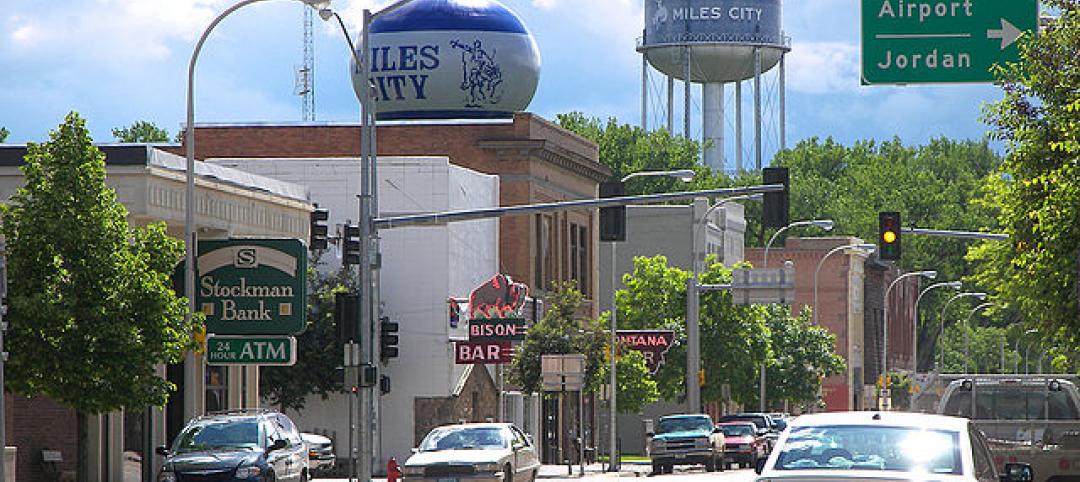This week, 100 Resilient Cities (100RC) announced that Perkins Eastman will join 100RC’s roster of Platform Partners.
The announcement will make the firm’s design, architecture, and planning services available to select 100RC Network members as they create and implement comprehensive resilience strategies. Through this partnership, Perkins Eastman will conduct one-day design integrated resilience planning workshops and provide design and consulting services around specific issues related to the built environment. Perkins Eastman becomes the first architecture firm to become a 100RC Platform Partner.
Platform Partners helps cities around the world prepare for, withstand, and bounce back from the “shocks” – catastrophic events like hurricanes, fires, and floods – and “stresses” – slow-moving disasters like water shortages, homelessness, and unemployment. The Platform Partners provide cities with tools they need to build resilience and influence the market as other resilience tools are developed. Current Platform Partners represent an array of private sector, public sector, NGO, and academic sector leaders. The addition of Perkins Eastman expands upon the design and architecture resources available to member cities.
In the aftermath of Superstorm Sandy, Perkins Eastman led multidisciplinary efforts throughout the New York Metropolitan area to create innovative plans and strategies for rebuilding communities, climate adaptation, and long-term resilience. Perkins Eastman has also led an interdisciplinary consortium to address the phenomena of aging populations. This work has been recognized with numerous awards, and in the process helped areas of New York City, Long Island, and New Jersey receive millions of dollars in additional funding for rebuilding efforts.
Each city in the 100RC network receives four concrete types of support:
- Financial and logistical guidance for establishing a new position in city government, a Chief Resilience Officer, who will lead the city’s resilience efforts
- Technical support for development of a robust resilience strategy
- Access to solutions, service providers, and partners from the private, public, academic, and NGO sectors who can help them develop and implement their resilience strategies
- Membership of a global network of member cities who can learn from and help each other.
Related Stories
Smart Buildings | May 21, 2015
Resiliency and climate change: Dual perspectives from designers at HDR
Two geographies, two perspectives, one conclusion: from Minnesota to Miami, resiliency matters, write HDR's Bob Beduhn and Lynette Cardoch.
Smart Buildings | May 1, 2015
FEMA to require states to evaluate risks posed by climate change
The aim is for states to do a better job planning for natural disasters they are likely to face in a warming world.
Smart Buildings | Jan 7, 2015
NIBS report: Small commercial buildings offer huge energy efficiency retrofit opportunities
The report identifies several barriers to investment in such retrofits, such as the costs and complexity associated with relatively small loan sizes, and issues many small-building owners have in understanding and trusting predicted retrofit outcomes.
Smart Buildings | Jan 7, 2015
Best practices for urban infill development: Embrace the region's character, master the pedestrian experience
If an urban building isn’t grounded in the local region’s character, it will end up feeling generic and out-of-place. To do urban infill the right way, it’s essential to slow down and pay proper attention to the context of an urban environment, writes GS&P's Joe Bucher.
BIM and Information Technology | Dec 28, 2014
The Big Data revolution: How data-driven design is transforming project planning
There are literally hundreds of applications for deep analytics in planning and design projects, not to mention the many benefits for construction teams, building owners, and facility managers. We profile some early successful applications.
Smart Buildings | Dec 3, 2014
Arup research explores urban infrastructure design in 2050
The report projects a future where highways will be made from self-healing, glow-in-the-dark materials and will be governed by sophisticated technologies that communicate with cars, road infrastructure, and GPS systems.
Smart Buildings | Oct 30, 2014
Energy Department pledges $9 million for energy efficiency improvements on commercial buildings
The U.S. Dept. of Energy will spend $9 million to encourage investments in energy-saving technologies that can be tested and deployed in offices, shops, restaurants, hospitals, hotels and other types of commercial buildings.
Smart Buildings | Oct 29, 2014
SCAPE’s 'living breakwaters' resiliency development wins 2014 Buckminster Fuller Challenge
New York-based landscape architecture firm SCAPE won the Buckminster Fuller Institute’s 2014 Fuller Challenge, billed as socially responsible design’s highest award.
Smart Buildings | Jun 8, 2014
Big Data: How one city took control of its facility assets with data
Over the past few years, Buffalo has developed a cutting-edge facility management program to ensure it's utilizing its facilities and operations as efficiently, effectively, and sustainably as possible.
Smart Buildings | May 19, 2014
New York should forget about surge barriers for most cost-effective resiliency plan, say researchers
Massive storm surge barriers would be too costly for the potential benefit to protect New York City from violent storms like Hurricane Sandy, researchers say.
















